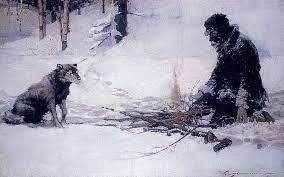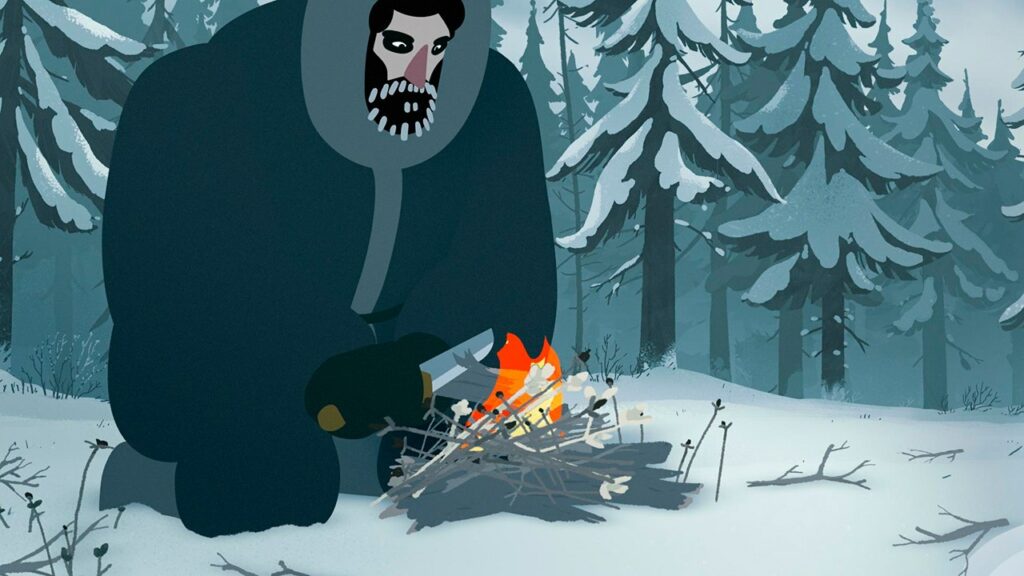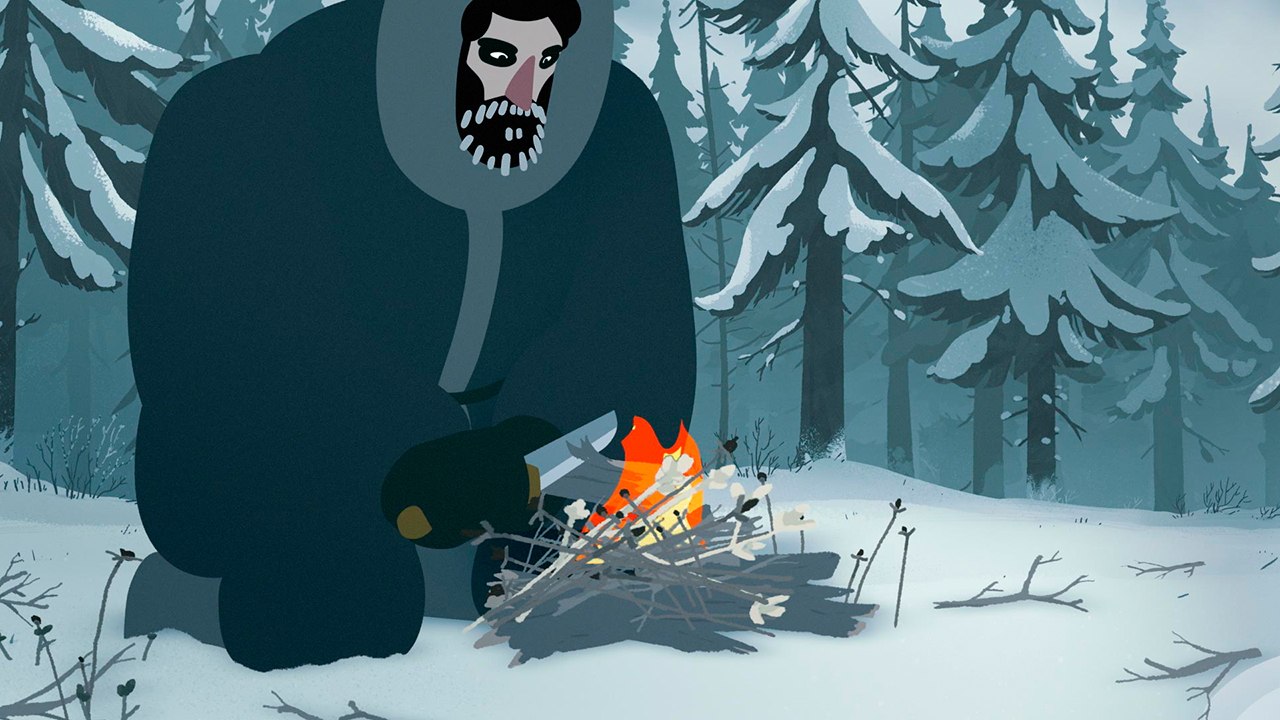‘To Build A Fire’ is a short story written by an American author called Jack London. There are two written versions of the story, with one being published in 1908 while the other in 1902. However, the 1908 version is more widely known by readers around the world.
This story tells a tragic tale of a man who decided to travel through the wilderness of the Yukon in freezing temperatures, alongside him a half-tame wolf dog. The dog’s instincts told it not to travel in such cold, however the man was indifferent about the situation. During his journey, ‘the man’s life depended upon his ability to light a fire to keep his feet from freezing.’ However, after countless pitiful attempts to make a fire, and running around in vain to regain good blood circulation, the man grew calm, and ‘decided to meet death with dignity,’ while recalling the words of an old man he’d met previously from Sulphur Creek: one mustn’t travel alone in temperature below minus fifty.
Jack London initially spent some influential years of his youth mining for gold in the arctic north, and returned to the United States a changed man. He was convinced that it was undeniable that modern conveniences and civilization had turned everyone, particularly men, into weak, wimpy cowards. He felt that the Yukon deemed an ideal place to use as the setting for his story, in order to make people realize that they needed to ‘reconnect with their animal instincts if they wished to remain strong against the pampering forces of the modern world.’

One could undeniably argue that besides our main character, the setting is the most important factor in the story, along with being one of the main themes (conflict between man and nature). As mentioned above, ‘To Build a Fire’ takes place in the Yukon, located in Alaska, during the great Klondike Gold Rush. During this period of time, thousands and thousands of people flocked to Canada’s Yukon territory in hopes of making an instant fortune; few knew how brutal and bitter their lives would become.
Like many others, Jack London experienced the harsh wilderness first hand, consequently making his writing of the Yukon very detailed and comprehensive; we can see this by London’s devotion to describing different situations and components in the story, such as the cold wind and the crusting ice over the man’s face: “The man’s red beard and moustache were likewise frosted, but more solidly, the deposit taking the form of ice and increasing with every warm, moist breath he exhaled. Also, the man was chewing tobacco, and the muzzle of ice held his lips so rigidly that he was unable to clear his chin when he expelled the juice.”
From hot spring pools to the spruce tree that dumped snow on the man’s fire, the setting is constantly challenging and working against our main man, while the man tries his best to overcome nature. Not only does Jack London’s setting attempt to make a physical impression on us, but also a philosophical and spiritual one; it reminds us that out there, there is always a harsh and unforgiving wilderness. Jack London gives us a hint on how we should respond to this wilderness: by learning to appreciate our surroundings, and not taking things for granted.
Another theme portrayed by the man in this story is the fight for survival, and acceptance of death; as his situation deteriorates, the man’s emotional state oscillates between seeming to foresee his approaching death, and other times having faith in his survival. When the snow fall on the fire, the man’s initial shock reflects his certainty of his death, but his calm reaction and response seems optimistic. After repeatedly dropping the matches, he attempts to innovate by planning to kill the dog to warm his hands; this quick thinking reflects man in desperate situations, forced to kill in order to live. However, after being unable to kill the dog, panic and fear overcome the man; his repeated running and falling shows the back-and-forth between his fight and his acceptance. His final fall represents his acceptance that death has befallen him. Alterations between the man’s perspective on his life and death, his need to struggle and his stages of acceptance, reflect the larger aspects of Realism.
One other equally significant theme in the story is instinctual knowledge against scientific knowledge. The dog and the man represent a huge distinction between nature and humans. The dog is unable to understand or reason, but his instincts direct his survival throughout the story. The man, on the other hand, relies on information gained from others, on logic, and on tools and technologies.
This scientific knowledge shadows the man’s instinctual knowledges, causing him to become overconfident in his abilities to survive in a harsh environment; he ignores the dog’s instinctual knowledge, that the weather is too cold to travel safely. Ultimately, the conclusion of the story shows a triumph of instinctual knowledge and trust in one’s gut feelings over confidence in logic and reason.












